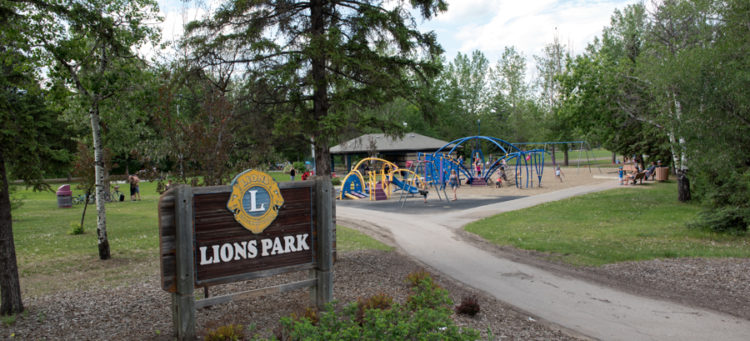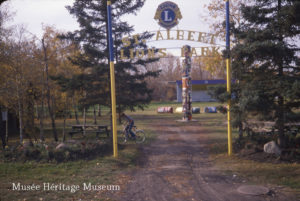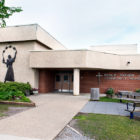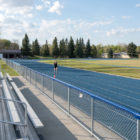
Then & Now
Lions Park: Then & Now
June, 2018
On quiet summer afternoons, when the sun is shining, there are few better places to be than Lions Park. It’s one of the oldest and most developed of St. Albert’s parks, so it may surprise you to know that this isn’t a City park at all—or at least, not entirely. For over 60 years, Lions Park has been the passion project of the St. Albert Host Lions Club, and they are the ones responsible for building it into what it is today. The park has seen many renovations over the years, and it continues to serve the needs of the community.
1950s
The Lions Club of St. Albert was formed in 1952 as the local branch of an international service organization whose members aim to better their communities and the world at large. In 1956, the St. Albert Town Council leased a plot of land to the club for them to develop however they wished. This land, situated between our city centre and the railway tracks, would become Lions Park.
The Lions Club was committed to the idea of building and maintaining a park for all of St. Albert to enjoy. In these early years, they focused on building picnic sites, landscaping and planting trees, and keeping the park cleaned up so that it remained attractive.
1960s
By now, the park was clearly a success. People were especially enjoying it on warm summer days. But the Lions Club still sought to improve it. They built shelters to give picnickers reprieve from the rain. They built mini-golf courses to entertain children. They even built a bandstand in 1966, so that residents could enjoy outdoor concerts on Sunday afternoons. There was also a small campground constructed in 1964, where visitors and residents alike could spend the night sleeping under the stars and telling stories around the campfire.
1970s

The Lions Club had put an incredible amount of time, money and energy into making their park a wonderful place to visit. And yet, while it was enjoyed by many, there were some who were bent on destroying what they had worked so hard to create.
Vandalism became a big problem in the 1970s – smashed lights, broken equipment, and even tar spread over the grass. In 1976, an entire merry-go-round was stolen under the cover of darkness, an effort that would have taken at least six strong adults, and a flatbed truck to pull off. Though the Lions Club offered a reward for information relating to the theft, they knew that they had to increase security and invest in infrastructure that would stand up to vandalism.
1980s
In 1984, the first phase of Red Willow Trail was completed, linking Lions Park to the rest of the valley. Now, it became a destination not only for picnickers, but also joggers, cyclists, and anyone out for an afternoon stroll. The trail expanded again in 1986, when a path under the trestle bridge was constructed, turning Lions Park into a central point on the trail system.
1990s
Ever since Town Council first leased the land to them, the Lions Club had been the sole overseer of the park. In the mid-1990s this changed, when the club gave the land back to the city. As such, while the city technically assumed responsibility for the maintenance of the park, improvements and development remained a joint effort.
Today
Lions Park is still under constant development and improvement, catering to the needs and desires of the community. While grand fixtures like the bandstand and the campground have disappeared, new features, such as playgrounds and the fitness circuit, have grown in their stead. One thing that hasn’t changed, however, is the emphasis on picnic sites. To this day, Lions Park remains a perfect place to spend a sunny, summer afternoon. t8n
Did You Know?
Many of the park’s features were developed as part of the Lions Club’s centennial celebration project in 1967. The club committed $30,000 to a large-scale renovation that included public washrooms and decorative archways, and less-visible improvements such as drainage systems to ensure the park wouldn’t flood during summer storms.
Fun Fact
While Lions Park may not seem large enough to host major events, it hosted an entire travelling circus in 1975. It was a one-tent show that boasted exotic animal acts, full-length clown shows, and acrobatics. (You might say it still hosts acrobatics when you see those kids in action on the playground.)













